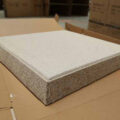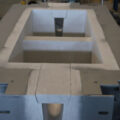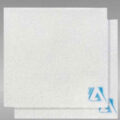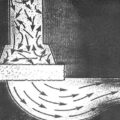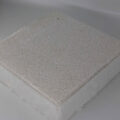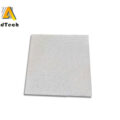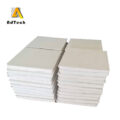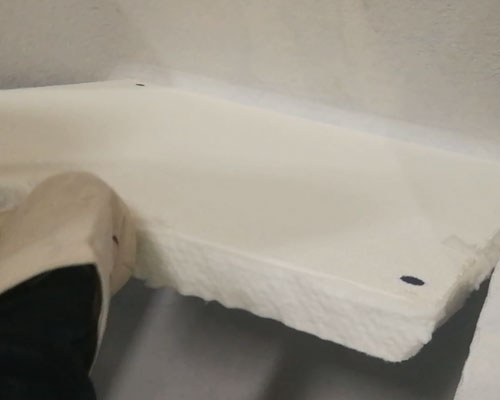
The ceramic foam filter for aluminium casting has a multilayer network and multi-dimensional through holes, and these holes communicate with each other.
When filtering, the molten aluminium will carry inclusions along the tortuous channels and pores. When the liquid aluminium contacts the foam framework of the filter plate, the inclusions will be directly intercepted, adsorbed and deposited. When the melt flows in the holes, the filter plate channels will bend. In addition, the melt flowing through the channel changes the flow direction, and the inclusions collide with the hole wall anvil and firmly adhere to the hole wall.
After degassing, the molten aluminium flows to the filter chamber. Under the action of hydrostatic pressure, it passes through the ceramic foam filter plate. After the first filtration is completed, the molten aluminium enters the flow cell through the water outlet.
In order to avoid tumbling and slagging of the aluminium melt in the case of large drops, the laundering method is adopted. A pipe is inserted at the end of the launder and trough to make the aluminium liquid flow into the ceramic launder from the leaking pipe. The outlet of the pipe is buried under the liquid surface of the washing tank to avoid oxidation and slag formation.
A 60ppi filter plate is placed 600mm from the flow cell to the crystallizer. Let the aluminium liquid enter the crystallizer through the filter plate under the action of gravity to complete the second filtration. Two-stage filtration can remove impurities larger than 10μm and purify molten aluminium. After degassing and filtering, high purity cast rods can be obtained.
The ceramic foam filter size and porosity can ensure the effect of the filter plate. The greater the porosity of the filter plate, the worse the slag removal effect. For demanding aluminium casting, the ceramic foam filter with small porosity should be selected.

